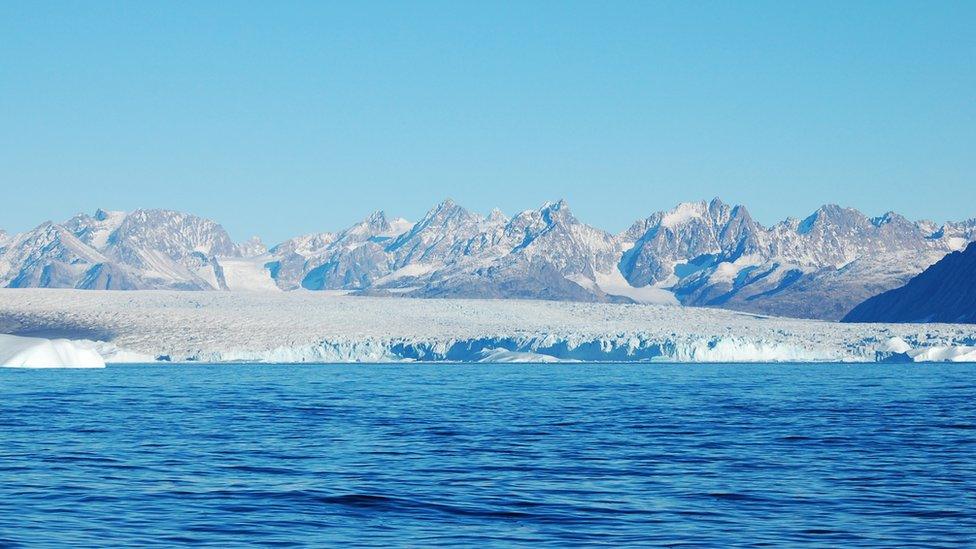Greenland ice melting 'even in winter'
- Published

The Greenland ice sheet is the planet's second largest
A team of Scottish scientists has revealed how the Greenland ice sheet is melting - even in winter.
The research has been carried out at the Scottish Association for Marine Science (SAMS) who found massive warm waves are melting the ice from below.
The Greenland ice sheet contains almost 650,000 cubic miles of ice and is the planet's second largest ice sheet.
Climate change means it is also the second largest contributor to rising global sea levels.
Ocean physicist Dr Neil Fraser has created computer models
Ocean physicist Dr Neil Fraser at the SAMS laboratories at Dunstaffnage, near Oban, has created a computer model of how huge waves below the surface of the Atlantic are pushing relatively warm water up Greenlandic fjords.
The scientific name is "coastally trapped internal waves".
They measure 140m from trough to crest.
The waves are warm, although in the Arctic winter this is a relative term, being a few degrees above zero.
They are created by strong winter winds in the northeast Atlantic.
Dr Fraser described it as a "perfect storm scenario".
He said: "These waves are pushing warm water into the fjord and towards the glacier, causing melting hundreds of metres below the ocean surface."
Dr Fraser concentrated his work on the Kangerdlugssuaq fjord which drains one of Greenland's major glaciers.
The team used computer simulations because it is difficult to study the system during the extreme Arctic winter.
Greenland's ice melt is accelerating
Oceanographer Dr Sam Jones has used the model to create animations that accurately replicate the flow of warm water into the fjords and beneath the ice sheet.
It builds on work by Prof Mark Inall of SAMS whose field studies of the fjord in summertime hinted that the waves could be undermining the ice.
Greenland's ice melt is accelerating, with the volume of meltwater reaching unprecedented levels.
SAMS said an estimated 600 gigatonnes of water flowed into the ocean in 2012.
Greenland accounts for more than 20% of the total annual increase in sea level.
Models like Dr Fraser's are contributing to a better understanding of what is happening and what could happen next.